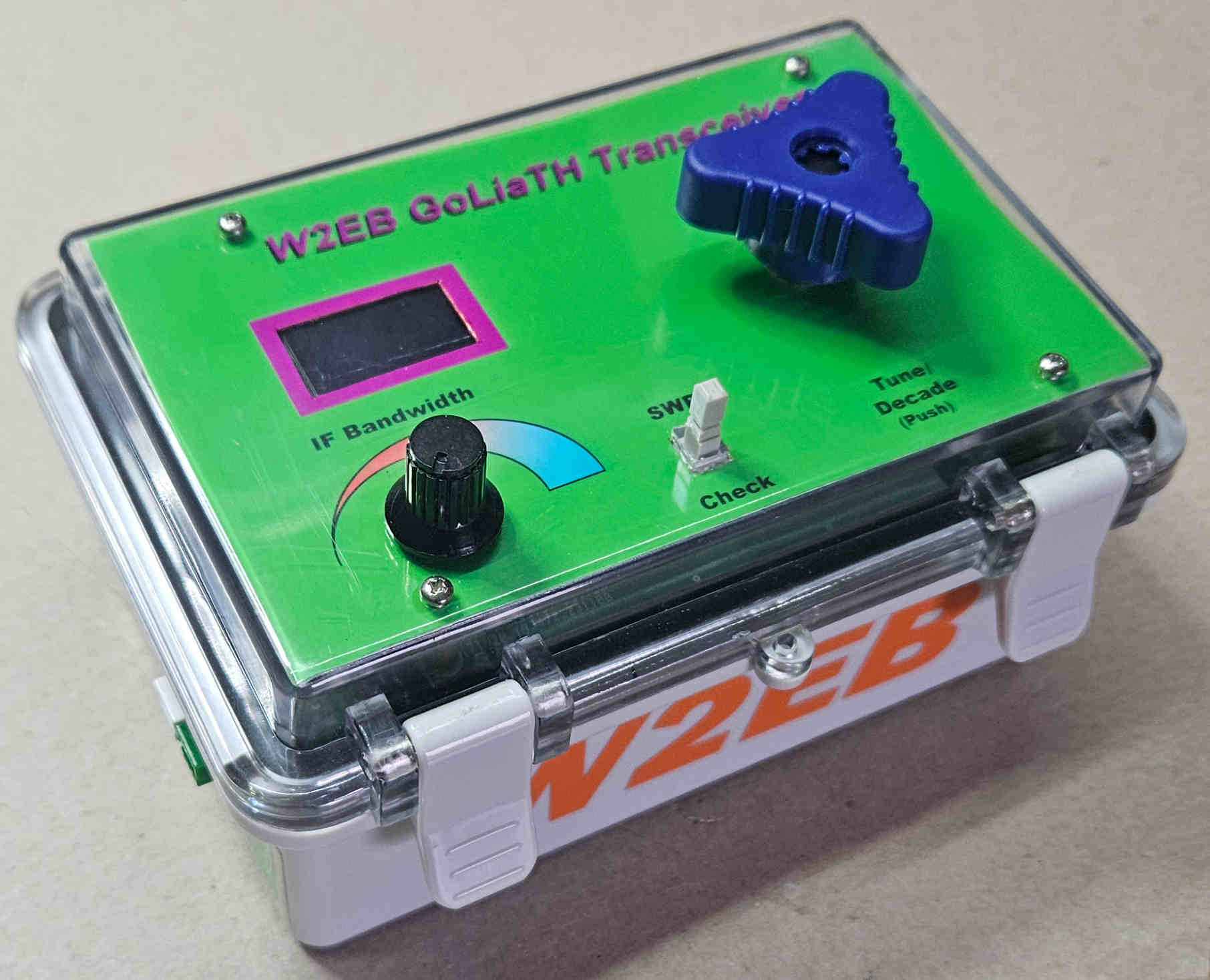
Electronic Design and Family Site
GoLiaTH
the Green Lakes Trail Hiker
29 Mar 2024

I own an ATS3-B designed by Steve Weber, KD1JV. This radio is a multi-band (80M to 15M) QRP CW Transceiver that can fit in an Altoids tin and operate from a 9V battery. I almost solely use it to operate ARRL Field Day but occasionally take it on vacation with me so I can operate special events (like SKCC Weekend Sprints). It's easy to transport and operate and performs surprisingly well.
BUT...
My ATS3-B is over 10 years old, not packaged particularly rugged or waterproof, uses obsolete parts, and uses firmware I can't modify. If this rig ever dies, there's a huge possibility that I may not be able to repair it. Thus was born the desire to design and build its replacement myself. That way, if I ever need to repair it, I will have spare parts already (I store multiples of any unique parts in case of future failure), I will have the capability of programming the firmware into a controller of my choosing, and I can modify/upgrade it myself should I desire added features.
The name for this radio comes from my favorite hiking and operating spot, Green Lakes State Park near Syracuse, NY.
Since I had a well operating unit already, I used that as the baseline for my design. I borrowed heavily from the original ATS3-B design, making changes to add (or remove) features, replace obsolete parts, and work with my more preferred parts. Some of the largest changes involved using an Si5351 oscillator IC instead of the older and less capable AD9834 DDS IC. Arduino programming references are very common on the web, so I decided to also replace the original processor with an Arduino Nano. I used VK3HN's SP-6 firmware as a starting point, then modified it very heavily. I also added on-board SWR measurement and a full-time battery voltage monitor.
The original ATS3-b design was simply a set of boards that could fit into an Altoids tin. Tiny, but not very rugged. My iteration was designed with a specific waterproof chassis in mind to (hopefully) improve ruggedness and water-resistance of the radio. The clear top of the chassis allowed me to easily use a full-time display rather than the CW annunciator KD1JV used on the original without compromising the water-resistance of the cover. I also wanted an actual rotating tuning control rather than use pushbuttons to tune the radio.
***Update (Jul 2024):
I used this rig in this year's ARRL Field Day . It worked "marginally". Keying wasn't working properly forcing me to send at or less than 5WPM. It appears that I didn't give keying enough priority in the firmware, so I rewrote the firmware a bit. I removed almost everything form the "Loop()" routine except checking the key, radix, and SWR buttons. All other functions were taken out of Loop(). I then removed real-time battery level checking and made it occur once every minute. I removed output power checking and put it as the last step of the SWR routine - now to check power, simply run SWR check and it will show output power when done checking SWR.
These changes seem to have improved keying a lot, but I haven't tested it in a real-world contest yet. More to follow...